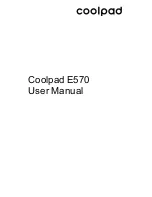
1-14
Cisco Unified IP Phone 7960G and 7940G Administration Guide for Release 8.0 (SIP)
OL-7890-01
Chapter 1 Product Overview
Where to Go Next
Where to Go Next
Use the following information to determine where to go next in this guide:
•
See
Chapter 2, “Installing Cisco Unified IP Phone 7960G and 7940G Hardware on the Desktop or
Wall,”
for placement of the phone on the desktop or wall and cabling information.
•
See
Chapter 3, “Initializing Cisco Unified IP Phones,”
for information on installing firmware,
customizing configuration files, and connecting the phone to power sources and the network.
•
See
Chapter 4, “Managing Cisco SIP IP Phones,”
for information on upgrading firmware and
performing other management tasks.
•
See
Chapter 5, “Monitoring Cisco SIP IP Phones,”
for information on debugging and on viewing
network statistics.
SDP
Session Description Protocol. An ASCII-based protocol that describes
multimedia sessions and their related scheduling information. Third-party
call control is supported using delayed media negotiation, which is SDP data
that is not completely advertised in the initial call setup. SDP also supports
endpoints specified as fully qualified domain names (FQDNs). The Cisco
SIP IP phone uses SDP for session description.
SNTP
Simple Network Time Protocol. Synchronizes computer clocks on an IP
network. Current date and time are supported using SNTP including time
zone and daylight saving time. The Cisco SIP IP phone uses SNTP for date
and time support.
TCP
Transmission Control Protocol. Provides a reliable byte-stream transfer
service between endpoints on the Internet. The Cisco SIP IP phone supports
TCP for Telnet sessions only.
TFTP
Trivial File Transfer Protocol. Allows files to be transferred from one
computer to another over a network. The Cisco SIP IP phone uses TFTP to
download configuration files and software updates.
ToS
Type of service. An indication of how an upper-layer protocol requires a
lower-layer protocol to treat its messages. In SNA subarea routing, ToS
definitions are used by subarea nodes to determine the optimal route to
establish a given session. A ToS definition comprises a virtual route number
and a transmission priority field. Also called class of service (CoS).
UDP
User Datagram Protocol. Exchanges data packets without acknowledgments
or guaranteed delivery. A SIP network can use UDP as the underlying
transport protocol. If UDP is used, retransmissions are used to ensure
reliability. UDP fragmentation is supported. The Cisco SIP IP phone
supports UDP as defined in RFC 768 for SIP signaling.
VAD
Voice activity detection. When enabled on a voice port or a dial peer, silence
is not transmitted over the network, only audible speech. Sound quality is
slightly degraded, but the connection monopolizes much less bandwidth.
Table 1-1
Supported Protocols (continued)
Protocol
Description
















































